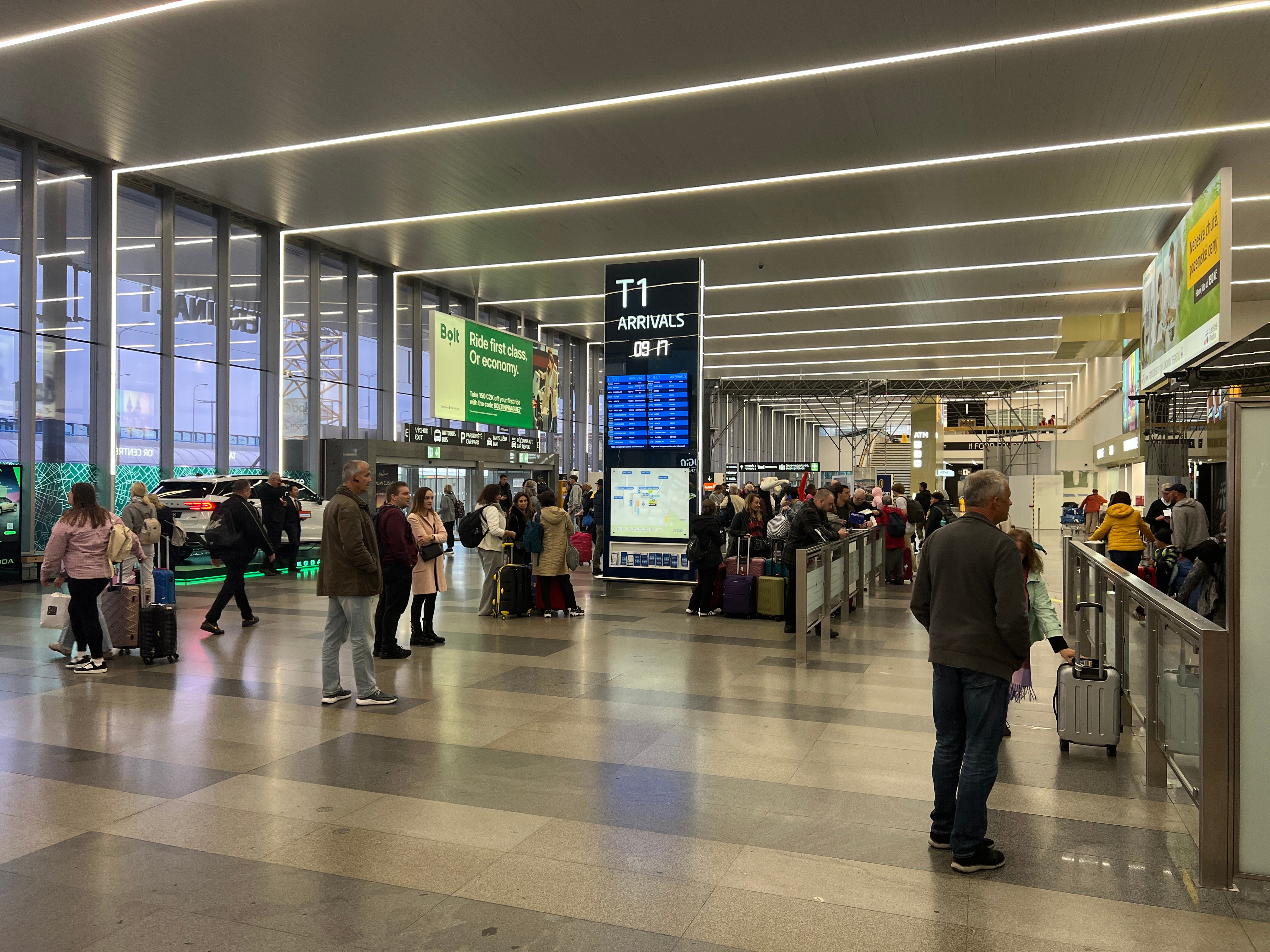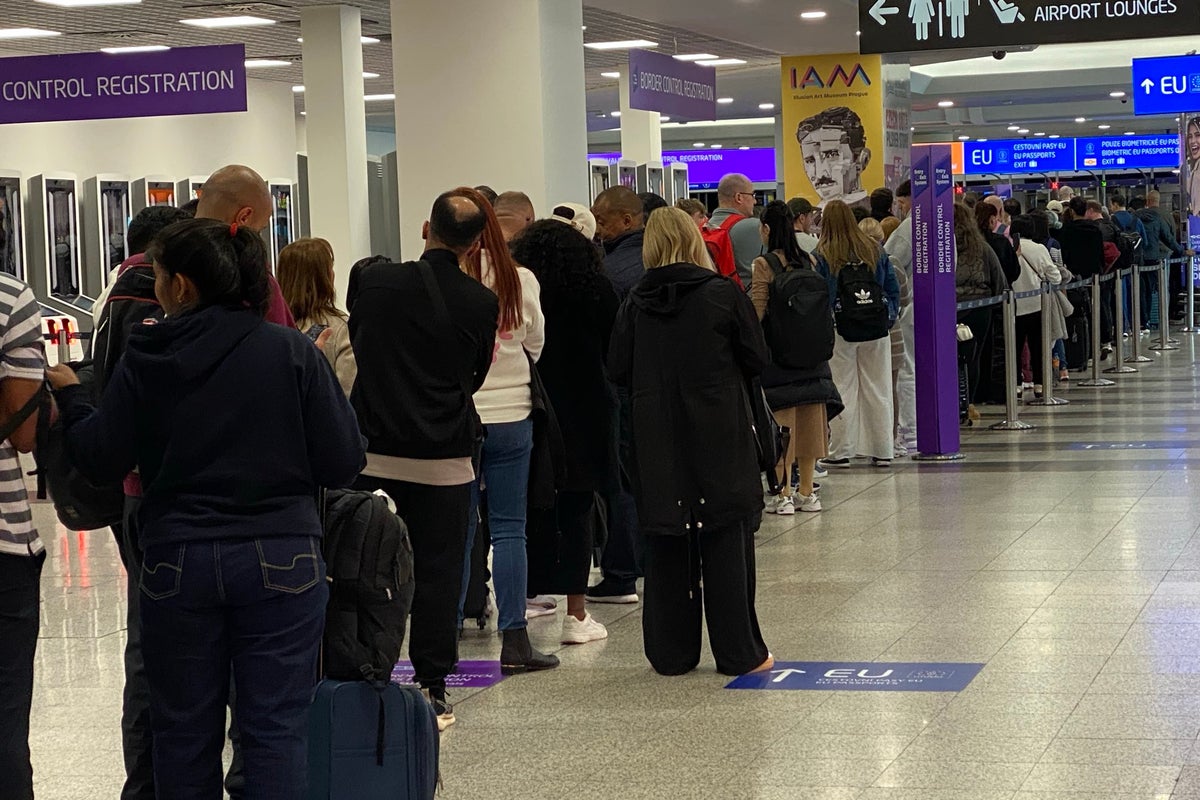Massive queues have built up at one of the few EU airports where the new entry-exit system has taken effect on day one.
The Schengen area digital borders scheme is being gradually rolled out across Europe, but three countries have said they will start fingerprinting and photographing all “third-country nationals” from the outset: the Czech Republic, Estonia and Luxembourg.
Early passengers landing from the UK at Prague airport – by far the biggest arrival point – said they had gone through the normal analogue checks without a significant wait.
But the authorities have now ordered passport staff to start taking fingerprints and facial biometrics at their posts rather than using the dozens of border registration machines that have been installed for that purpose.
As a result queues have built up as arrivals from British airports as well as Turkey, Egypt and the UAE converge on the passport desks in Terminal 1 of Prague airport.
One arrival from Leeds Bradford, Stuart Linden Rhodes, told The Independent: “All machines still switched off, heading to an hour now. Fingers and eyes being done at the passport control desk.”

Starting on Sunday 12 October, Schengen area member states have 180 days to make all their frontiers EES-compliant. That means the faces and fingerprints of third-country nationals such as the British are stored on a central EU database.
Senior travel figures have warned of long waits. Michael O’Leary, chief executive of Ryanair, said: “I’m pretty certain it’s going to go wrong.” But he added: “We’re moving into the winter period, so there’s a lot less pressure on, but I think it will be bumpy and lumpy through the winter.”
Mark Tanzer, chief executive of Abta, the travel association, was frank about the challenge posed by the digital borders plan. “I’m afraid there will undoubtedly be some delays as this new entry and exit system for the Schengen area comes into effect,” he told The Independent.
Julia Lo Bue-Said, chief executive of Advantage Travel Partnership, advises “leaving yourself between three and four hours from the point of entry” before you plan to do anything sensible.
She told the BBC Today programme: “If you’re not leaving yourself enough time and you unfortunately arrive at an airport where there is a bottleneck, which in a lot of places there are already, this is going to add another layer of frustration and delay.”
The Schengen area (comprising most of the EU plus Iceland, Norway and Switzerland) has 1,800 border crossings, with more than 500 million entries and exits a year.



